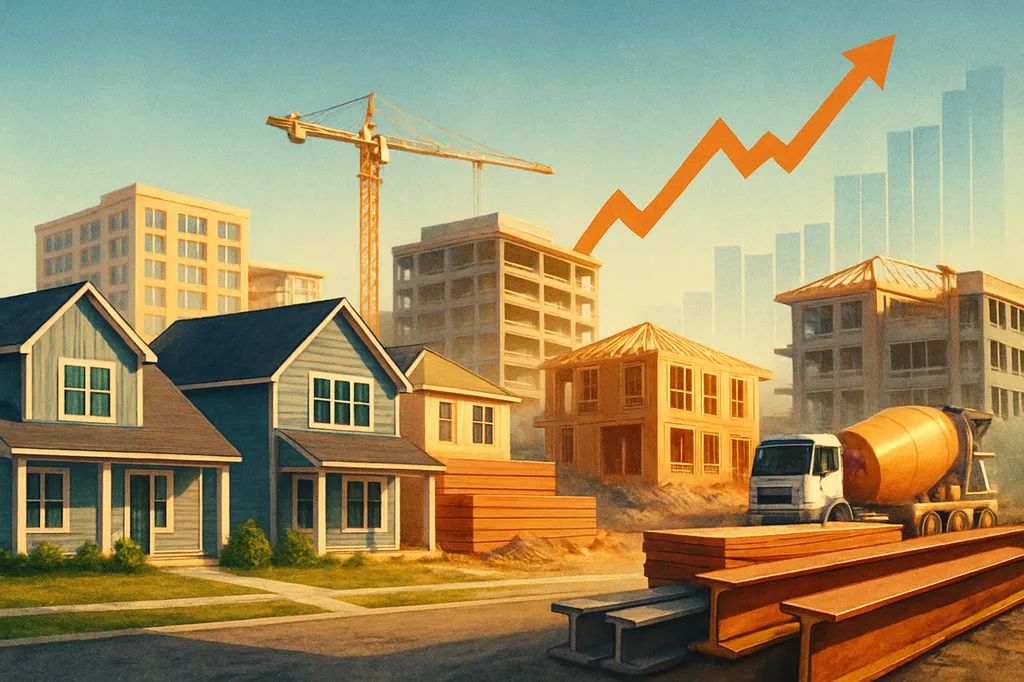The St. Joe Company (NYSE: JOE) stands at a crossroads in October 2025, with its stock price lingering in the mid-$40s, far from its all-time highs set nearly two decades ago. Despite a robust Q2 2025 earnings report, the company faces a critical question: Can the surging demand in the Sunbelt real estate market outweigh the persistent challenge of elevated construction commodity costs, ultimately propelling JOE to unprecedented stock valuations?
The immediate implications of this scenario are twofold. On one hand, The St. Joe Company’s strategic focus on the booming Florida market positions it advantageously to capitalize on demographic shifts and increased investment activity. On the other, the specter of rising material costs, exacerbated by global supply chain issues and protectionist trade policies, threatens to erode development margins and potentially temper the pace of new projects. This delicate balance between robust demand and inflationary pressures forms the core narrative for JOE’s performance in the coming months.
The recent Q2 2025 earnings report from The St. Joe Company painted a largely optimistic picture, showcasing a 16% increase in overall revenue and a 20% rise in net income. Real estate revenue, a critical segment for the company, surged by an impressive 27%, underscoring the strength of its development projects, particularly in Northwest Florida. This financial health reflects a strategic expansion phase, where new residential, commercial, and hospitality ventures are gaining traction. The market initially reacted positively to these results, with a notable 1.79% uptick in JOE’s stock on October 14, 2025, suggesting investor confidence in the company’s operational capabilities and market positioning.
However, this positive momentum is set against a backdrop of challenging dynamics in the construction commodity markets. Throughout 2024 and continuing into 2025, the construction industry has grappled with persistent high prices for essential materials such as steel, lumber, and cement. This trend has been significantly influenced by a combination of global inflationary pressures, limited production capacities, and, notably, escalating tariff policies. For instance, tariffs on steel and aluminum have seen substantial increases, with a proposed 50% tariff on copper threatening to further inflate its already rising costs. While some relief has been observed in specific areas like PVC prices due to softer demand, the overall trend for key structural components and equipment, including HVAC systems and electrical gear, remains upward, with projected increases of 10-12% and 8-10% respectively.
The timeline leading up to this moment reveals a gradual tightening of commodity markets following post-pandemic supply chain disruptions, which, instead of fully resolving, have morphed into a new normal of elevated costs and volatility. Government policies, particularly trade tariffs, have played a significant role in shaping this environment, directly impacting the procurement costs for developers like The St. Joe Company. Key players involved include JOE’s management team, which must strategically navigate these cost pressures, various construction material suppliers who are passing on increased expenses, and government bodies whose trade policies directly influence the availability and pricing of raw materials. The initial market reaction to these dual forces is a cautious optimism: investors acknowledge JOE’s strong performance but remain wary of how long and effectively the company can absorb or pass on rising construction costs without impacting demand or profitability.
In this environment of robust real estate demand coupled with high construction commodity costs, The St. Joe Company (NYSE: JOE) stands as a primary focal point. As a vertically integrated real estate developer, JOE’s profitability is directly tied to both the pace of its development and the cost efficiency of its construction. On the “winning” side, JOE’s strategic advantage lies in its significant land holdings and established presence in high-growth areas of Northwest Florida. This allows the company to control development pipelines and potentially mitigate some external cost pressures through scale and long-term planning. Its ability to command premium pricing for its residential, commercial, and hospitality offerings in a sought-after region also provides a buffer against rising input costs. Strong Q2 2025 earnings demonstrate an effective strategy of passing on some of these costs to consumers or optimizing internal processes. However, should commodity prices continue to climb unchecked, even JOE’s strong market position could be tested, potentially compressing margins on future projects and slowing the pace of new commencements.
Conversely, companies heavily reliant on commodity-intensive construction without the scale or market power of a developer like JOE could face significant headwinds. Smaller, independent builders might struggle more acutely with unpredictable material costs, potentially leading to project delays, budget overruns, and reduced profitability. Construction material suppliers, while benefiting from higher prices for their goods, also face their own challenges in managing raw material

